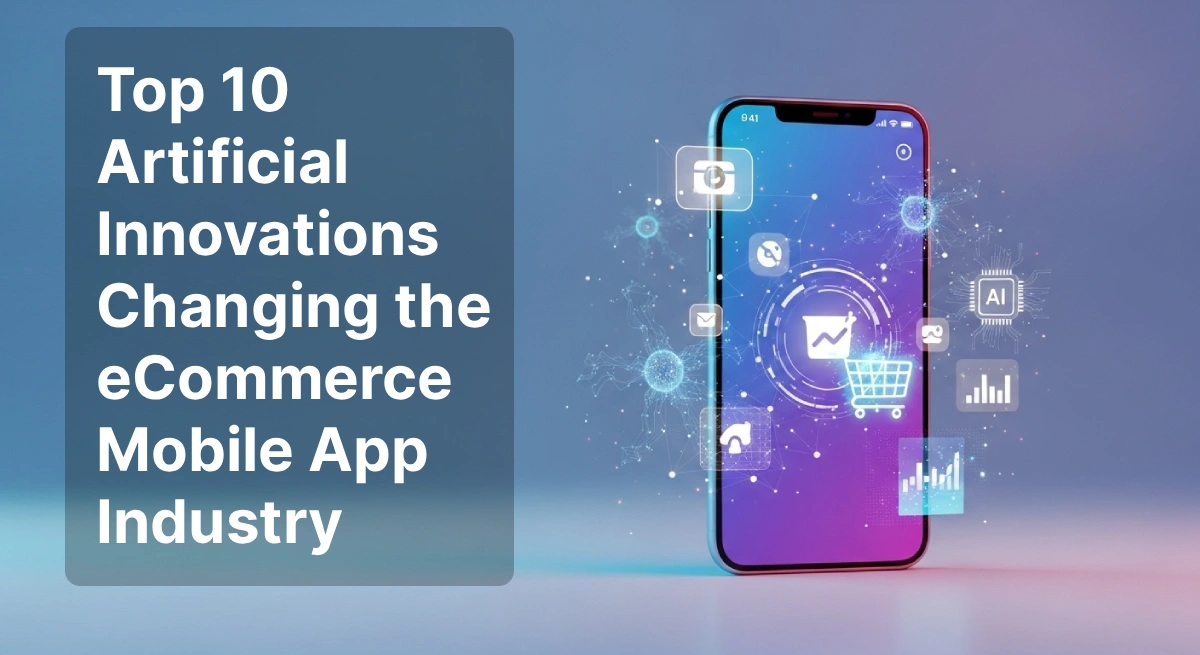E-commerce is always a data-driven business, but today, with the advent of Artificial Intelligence, this data is transformed into dashboards and reports. AI is shaping the e-commerce industry, influencing customer conversations, product discovery, fraud prevention, fulfillment, and the way customers physically try on clothes.
Below are the top 10 AI innovations that are reshaping e-commerce apps.

Hyper-personalization
Modern personalization involves transaction history, browsing behavior, micro-moments, contextual signals, and real-time session signals. Personalization increases conversion rates, average order value, and matches the right product to the right customers. Many retailers use AI personalization for better conversions.
AI agents and Conversational Commerce
Beyond FAQs, AI chatbots have moved to full conversational commerce. It helps customers to answer sizing questions, find products, guide checkout, and complete shopping. The use of large language models helps in giving more specific answers to users. Chat-based AI agents meet users in channels that they prefer. Retailers are buying directly from the chat agents.
Image-based shopping and Visual search
Visual search allows customers to upload an image and find similar products. Especially for home decor and fashion products, this helps in avoiding the problem of exhibiting the exact product that they were looking for. This image-based shopping increases user engagement and shortens the searching path and time. It prioritizes high-quality product images and different angles. For ranking, it combines similar images with business rules.
Augmented Reality (AR) Shopping
Virtual try on and Augmented reality are closing the gap between trying clothes before buying. Virtual try-on applies to makeup, clothing, and accessories. This can be achieved by using an uploaded photo or through a live camera. Two direct benefits that can be achieved are increasing shopping confidence for users and reducing returns. Large platforms have implemented this virtual try-on feature.
Use of Generative Artificial Intelligence
Generative AI is used to produce product descriptions, images for A/B tests, and create marketing videos and images. It improves conversions and discoverability. Retailers are using AI to adapt creatives and channels automatically.
Semantics and Vector Search
Searching for a particular product has moved from keyword matching to semantic match. Understand the user queries, even if it is ambiguous, and return the best match. Better search results in higher conversions. The discovery of long tail keywords makes the search more wise.
Demand Forecasting and Inventory Optimization
Casual forecasting and all time-series models help in predicting the demand for the product more accurately, by incorporating seasonality, promotions, and external signals. Both overstock and out-of-stock will kill shopper trust. This smarter forecasting makes everything smooth. Low carrying cost and fewer emergency replenishments.
AI-based pricing and promotions
Dynamic pricing uses elasticity estimates, competitive intelligence, and inventory position. The optimization of AI will help in deciding which customers should receive offers and coupons. This, in turn, improves the conversion rates. Can be transparent about coupons and discounts. To prevent automated discounts from being implemented on ceilings and floors.
Fraud detection powered by AI
Online fraud activities evolve faster. The use of ML signals transaction patterns, behavioral biometrics, and network intelligence to detect account takeover, bot activity, and prevent fraudulent payments. The implementation of AI aids in accurate fraud detection and helps preserve margins. Use of layered controls makes the friction adaptive.
Automation of Warehouse
AI optimizes and controls warehouse robotics, packing algorithms, picking routes, and dynamic route planning for fast delivery. AI on the app side accurately predicts the expected time of delivery. Operational efficiency reduces delivery cost and time. This AI optimization will reduce the error rates.
Broader Impacts
- Business – Small business owners can compete with better discovery and personalized experience. Big enterprises can implement AI to run at margins.
- Ethics and Privacy – Be transparent and give controls to your customers; personalization needs data. Avoid opaque price optimization that looks discriminatory.
- UX – Users now expect more relevant results, faster answers, and easy checkout. Always prioritize control and clarity.
If you have an e-commerce mobile app, the best thing is to improve discovery and friction-free checkout. These AI optimizations will improve retention and conversions. After implementing this, later invest in automation and AR. Focus more on privacy, measurable experiments, and make sure it has a clear business KPI.








